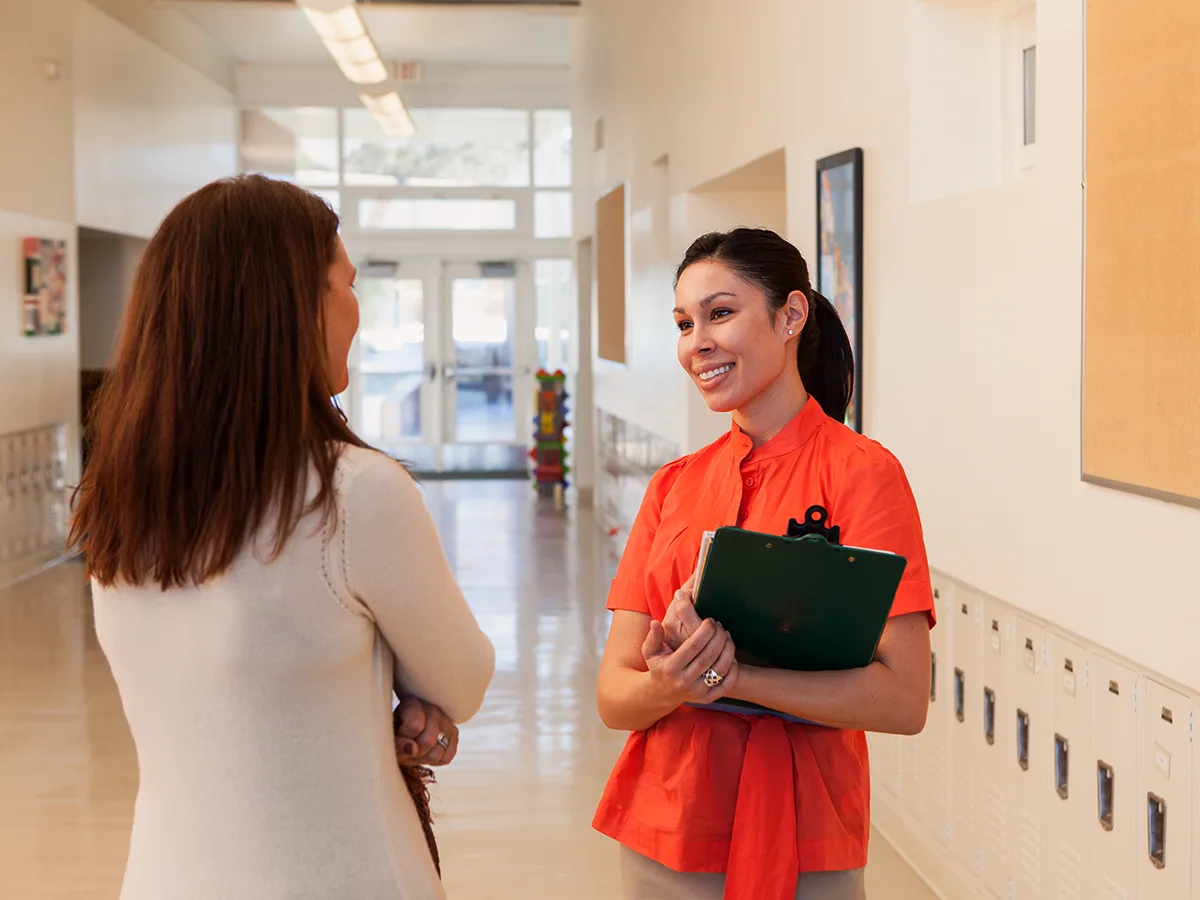Paraprofessionals: What you need to know

At a glance
Paraprofessionals are important members of a school’s staff.
They’re sometimes called instructional aides or teacher assistants.
Paraprofessionals provide different kinds of support that help make classrooms more inclusive.
On any given school day, there are many adults working to support student learning. Students may work with teachers, counselors, related service providers, and classroom volunteers. They may also receive support from .
The Every Student Succeeds Act (ESSA) uses the term paraprofessional. You may also hear them called ed techs, classroom assistants, instructional aides, teacher assistants, paraeducators, and paras. No matter what you call them, paraprofessionals are an important part of a school’s community.
Paraprofessionals are not certified teachers, but they are vital members of a school’s support staff. They are credentialed education professionals who work alongside and under the direction of a certified teacher or school professional.
Here’s what you need to know about their training and how they support teachers, students, and families.
What paraprofessionals do
Paraprofessionals provide instructional, behavioral, and other support to students in and outside of the classroom. Paraprofessionals often work one-on-one with students who receive and related services or those who have a 504 plan.
Some paraprofessionals work with students in a special education classroom. Others may work with students in a general education classroom or rotate to support all the classes in a specific grade level.
Here are four common ways paraprofessionals provide support:
1. Instructional support
A paraprofessional may work with students one-on-one or in small groups to reinforce learning. They may provide extra support during or after a teacher’s lesson. They may also lead small group activities, allowing the teacher to support students in other ways.
For example, a paraprofessional may work with a small group of students who need extra help understanding a math concept, while the teacher works with students who are ready to move on to learning the next concept.
2. Language support
In some classrooms, bilingual paraprofessionals provide language support to . This is especially true in classrooms for students just beginning to learn English. Paraprofessionals may help ELLs understand the academic content of lessons by speaking with students in their home language.
Paraprofessionals often live in the school neighborhood and share the same cultural traditions as their students. This can help paraprofessionals serve an important role. They can be a link to the community. And they can work with the teacher to make sure the instruction and learning materials are culturally responsive. They can even help create learning materials in another language.
3. Behavioral support
Paraprofessionals often work with students who struggle with expectations for classroom behavior. For example, if a student has a behavior intervention plan (BIP), paraprofessionals may help to implement the plan. If the team needs documentation about how behavioral interventions are working, paraprofessionals may take notes throughout the day.
Paraprofessionals who provide behavioral support are taught strategies to help with behavior, like giving specific praise for appropriate behaviors. They may also be trained to help in crisis situations.
Many paraprofessionals also build strong relationships with the students they work with. They often spend more one-on-one time with students than the other adults on staff. That gives them insight that can be used to help teachers understand what a student’s behavior is communicating. This understanding can help teachers respond to challenging behaviors with empathy.
4. Physical and medical support
Some paraprofessionals work with children who have physical disabilities. Paraprofessionals can help with adaptive skills, like self-care and communication.
They may also collaborate with the school nurse to work with students who need medical support. For example, they may help children who are at risk for seizures or who have severe allergies.
Qualifications and training
Paraprofessionals don’t have the same training and certification as teachers. The requirements vary from state to state and even among school districts. Under ESSA, paraprofessionals provide teaching support and must have a high school diploma (or its equivalent) and also meet one of these requirements:
Finished two years of study at a college or technical school; or
Hold at least an associate’s degree; or
Be able to show, through a formal state or local academic assessment, that they know about and can assist in reading, writing, and math instruction
Paraprofessionals must have knowledge and skills to be good at working with students. Like other educators, a paraprofessional needs to know when to step back and encourage a student to be independent, but also when to step in and provide support.
Paraprofessionals often learn many of their practical skills on the job. They can be more effective when they have ongoing training and access to professional learning opportunities. Whenever possible, schools should include paraprofessionals in staff meetings and other events so they are up to date on all school policies, curriculum, and student needs.
Paraprofessionals play important roles in schools and help make classrooms more inclusive. They add another layer of support to the classroom, allowing students to have more opportunities for one-on-one support. When students, teachers, and families embrace paraprofessionals as key members of the education team, everyone benefits.
Key takeaways
Paraprofessionals provide instructional, behavioral, and other support to students in and outside of the classroom.
Some paraprofessionals work one-on-one with students, while others support small groups or whole classes.
Paraprofessionals don’t have the same training as teachers, but they’re required by law to meet certain qualifications.

